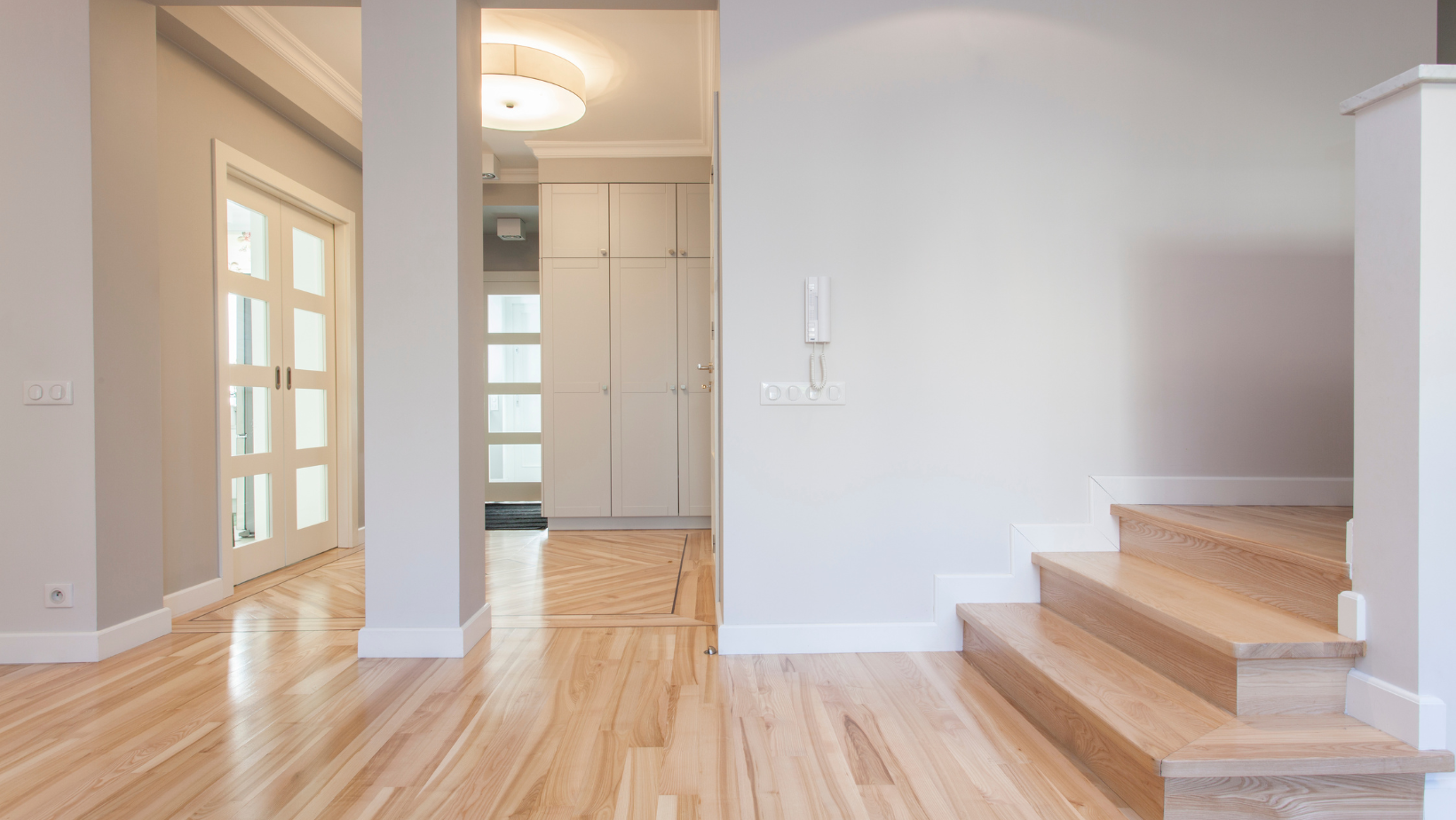Ever stepped onto outdoor stairs that felt too short for your foot?
Here’s what you need to know: how deep should outdoor stair treads be?—ideally 10 to 11 inches.
This depth provides a safe, stable surface for every step and enough space for accessories like carpet stair treads to be securely installed.
In this guide, you’ll learn how tread depth affects safety, comfort, and design—plus what to do if your stairs don’t meet the mark.
Whether you're building new steps or upgrading existing ones, the right depth makes all the difference.
Keep reading to discover smart, code-compliant solutions for your outdoor staircase.
The Recommended Depth for Outdoor Stair Treads
A common question homeowners ask is, how deep do stair treads need to be?
For outdoor stairs, the answer is typically 10 to 11 inches.
This depth gives you enough surface area for a full foot landing, making each step safer, smoother, and more natural—especially when carrying kids, groceries, or navigating in bad weather.
While this might seem like a design preference, it’s actually backed by building regulations.
Most local codes, including those based on the International Building Code (IBC), require a minimum of 10 inches for tread depth on residential outdoor stairs.
That measurement is taken from the front edge (or nose) of the tread straight back to the riser.
Whether you're building new stairs or updating old ones, it's essential to check your local code requirements.
Falling short of code could mean expensive fixes or worse—unsafe conditions.
So if you’re aiming for safe and compliant stairs, the 10 to 11-inch range is your best bet.
What Happens If Tread Depth Is Off?
The problem with shallow steps is that they just don’t feel right.
Most of us take walking for granted, but stairs change everything.
If your foot can't land squarely on each tread, you instinctively start shifting your weight or changing your stride.
That creates imbalance, which increases the risk of tripping or falling.
On the other end of the spectrum, overly deep treads can stretch your stride too far—especially for young children, older adults, or anyone with knee or balance issues.
Stair design is about creating a rhythm.
When that rhythm is interrupted, safety is compromised.
Visual Appeal Starts with Proportion
Stair treads do more than just hold your weight—they set the tone for your home’s entrance or backyard escape.
When stair treads are properly proportioned to their risers (the vertical section between steps), you get a clean, balanced look.
That’s a subtle but powerful design cue—especially important for front entrances, decks, porches, or patios that make up a large part of your home's curb appeal.
In other words, form matters just as much as function.
Poorly designed stairs can visually shrink a space, disrupt your landscape flow, or make your hard-earned renovations feel unfinished.
The Role of Stair Tread Depth in Comfort and Confidence
Outdoor stairs are often used when you’re multitasking—carrying a bag, chasing the dog, or helping a child.
That’s why confidence in every step is key.
Depth plays a role in how quickly and securely someone can use the stairs without watching every foot placement.
Deeper treads also give you more surface area for traction.
That means better grip, less chance of slipping, and a more grounded experience—even in wet or icy conditions.
If you live in a climate that experiences rain, snow, or frequent leaf buildup, having enough space underfoot can make the difference between slipping and staying upright.
Can You Use Carpet Stair Treads Outdoors?
Yes—and doing so can take your stairs to the next level in both comfort and safety.
Outdoor-rated carpet stair treads give your steps better grip, a softer feel, and a stylish design accent.
They’re a favorite for households with kids, pets, or older adults because they reduce the chance of slipping—especially when stairs are wet or muddy.
But here’s the key: outdoor stair carpet needs to be designed for the elements.
Not every product is made to withstand sun, rain, and temperature swings.
When choosing carpet treads for outdoor use, make sure they are:
-
UV-resistant (so they don’t fade)
-
Water-resistant (to avoid mildew or mold)
-
Durable and grippy (for traction on wet steps)
Oak Valley Designs offers custom-sized treads that meet all those marks—and we even offer swatches so you can feel the quality before you buy.
How Tread Depth Affects Carpet Application
If you’re planning to add carpet treads, your existing step depth matters more than you might expect.
Short treads may not allow enough room for the full carpet tread to adhere properly.
This can lead to lifting, folding, or slipping—essentially undoing the benefits the carpet is meant to bring.
Conversely, if your stairs are deep, you may need a custom carpet solution to ensure even coverage that doesn't look undersized.
This is where our DIY-friendly stair treads shine.
We offer made-to-measure options that match your stair’s actual dimensions.
No guessing.
No shifting. Just a secure fit and elevated design.
Can You Make Existing Stair Treads Deeper?
This is one of the most common homeowner questions we hear.
Can you make existing stair treads deeper?
And the answer is: yes, you can make existing stair treads deeper—but how you do it depends on your stairs' current structure, your tools, and your budget.
Option 1: Add a Front Extension
If your stairs are structurally sound, adding a tread extension or nosing is often the easiest way to increase depth.
This involves attaching a rounded or squared piece to the front of each tread, typically made from wood, composite, or metal.
It’s a quick win for DIYers and gives a professional look when done right.
Option 2: Replace the Treads Entirely
If the stairs are old or you’re planning a larger renovation, replacing the entire tread with a deeper board might be more effective.
This allows you to reset both the aesthetic and the safety standards of your stairs.
Option 3: Build Over Existing Treads
In some cases, a carpenter may recommend building over the current steps with a new “cap” system.
This creates a deeper, reinforced tread surface while preserving the original structure underneath.
Whatever route you choose, it's critical to maintain the right riser height ratio and ensure each step remains consistent in size—uneven stairs are a trip hazard and can fail code inspection.
DIY vs Professional Help
If you’re adding nosing or treads with straightforward materials and minimal change, a DIY approach may work.
But if your stairs need full rebuilds, or if safety is even slightly in question, calling in a licensed contractor is a wise move.
A professional can:
-
Ensure code compliance
-
Maintain stair integrity
-
Provide design insights for both form and function
-
Offer long-lasting, weather-resistant materials
At the end of the day, stairs are load-bearing, high-use structures. It’s worth getting them right the first time.
How to Evaluate Your Current Stair Tread Depth
Here’s how you can check your stair tread depth today:
-
Grab a tape measure.
-
Place it at the very front edge (nose) of one tread and extend it straight back to the riser.
-
Record that number in inches.
-
Repeat for each step.
If your treads are under 10 inches, you may be below code and at risk for safety issues.
And if you're adding outdoor carpet treads, make sure your measurement includes any existing nose or edge detail, so your carpet fits flush.
Frequently Asked Questions
Why might outdoor stairs need deeper treads than indoor ones?
Outdoor stairs deal with more variables—like wet surfaces, loose dirt, and heavier foot traffic.
A deeper tread gives you extra stability and helps prevent slips, especially when you're carrying something or wearing bulky shoes.
That’s why many outdoor steps benefit from being on the higher end of the depth range.
Is it easier to install carpet stair treads on deeper outdoor steps?
Definitely.
Deeper treads allow carpet stair treads to sit flat and secure, reducing the chance of curling or slipping.
If your stairs are too shallow, you may struggle with coverage or have to modify the treads for a safer, better-looking fit.
What can I do if my outdoor stairs feel too narrow?
If your steps feel tight or unsafe, you’re probably wondering if they can be adjusted—and yes, you can make existing stair treads deeper.
Simple upgrades like adding a nosing or tread cap can give you the extra space you need without a full rebuild.
Just be sure to follow building codes and keep the stair height consistent to stay safe and compliant.
Steps To Success
You might be surprised by how much this one measurement—stair tread depth—affects how your entire outdoor space feels.
It changes how safe the stairs are.
How beautiful they look.
And how comfortable they are to use every single day.
Whether you’re planning to build, remodel, or simply upgrade with carpet stair treads, getting the depth right is one of the most important (and most overlooked) steps in the process.
And yes—you can make existing stair treads deeper if needed.
At Oak Valley Designs, we’re here to help with custom-fit solutions, simple returns, and southern hospitality you can count on.
Contact Us Today
Looking to upgrade your outdoor stairs or add secure, stylish carpet stair treads?
Whether you’re remodeling, repairing, or just getting started, our team is ready to help you find the perfect fit—designed with comfort, safety, and family in mind.
-
Website: https://oakvalleydesigns.com/
-
Phone: 706.331.0315
-
Email: info@oakvalleydesigns.com
-
Address: 30 River Ct SW Bldg E Cartersville, Ga 30120



